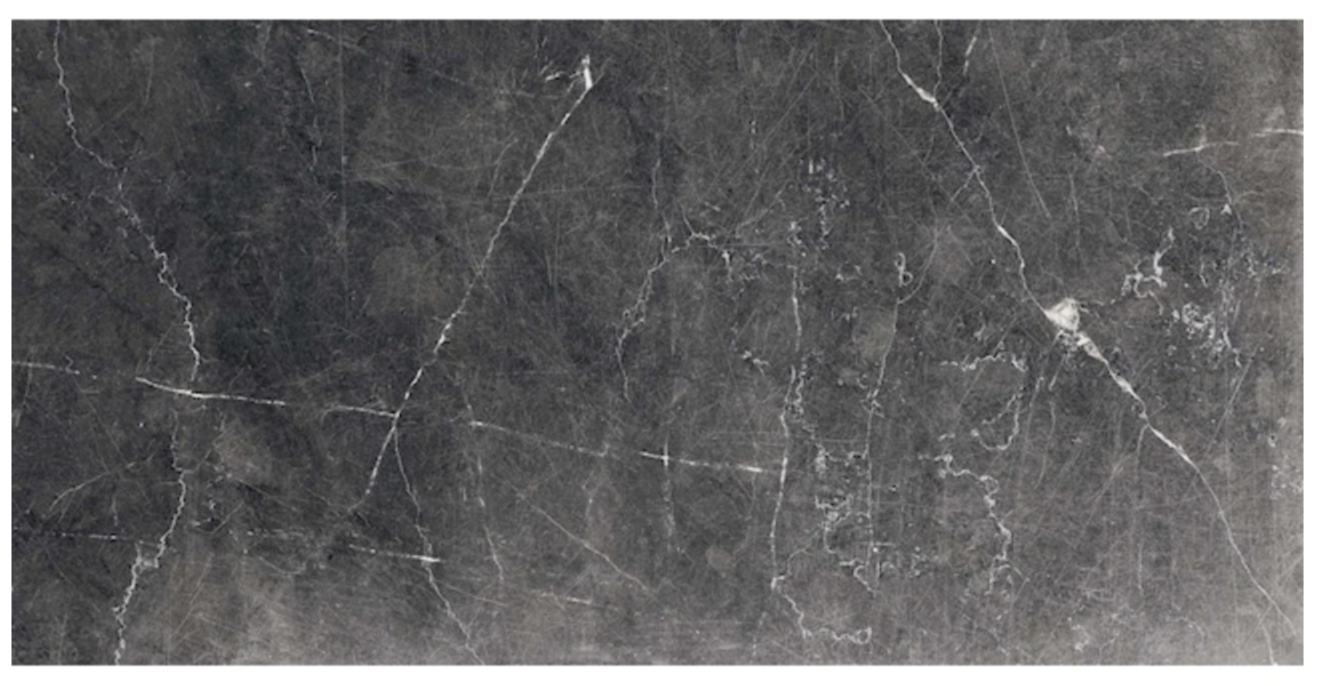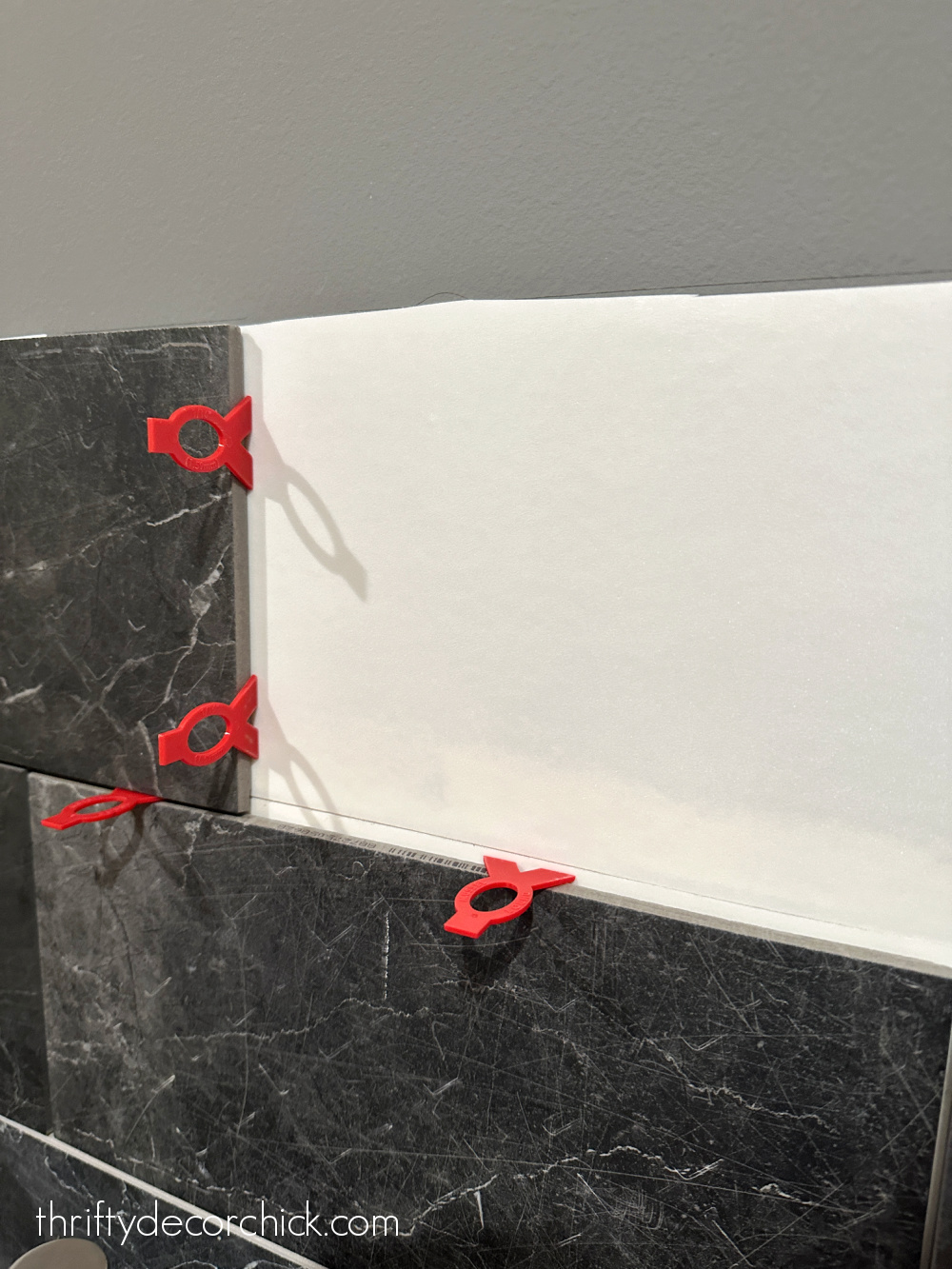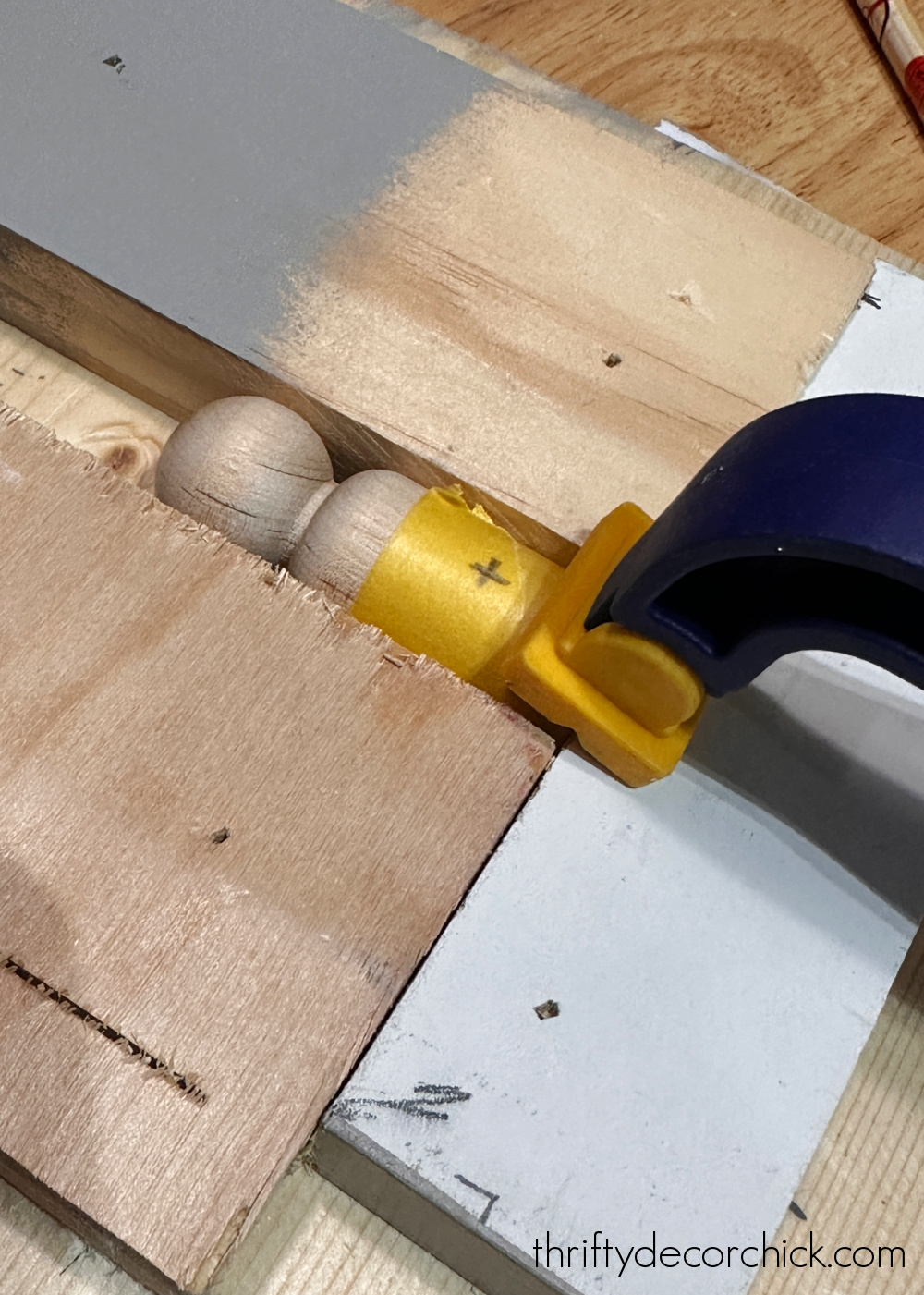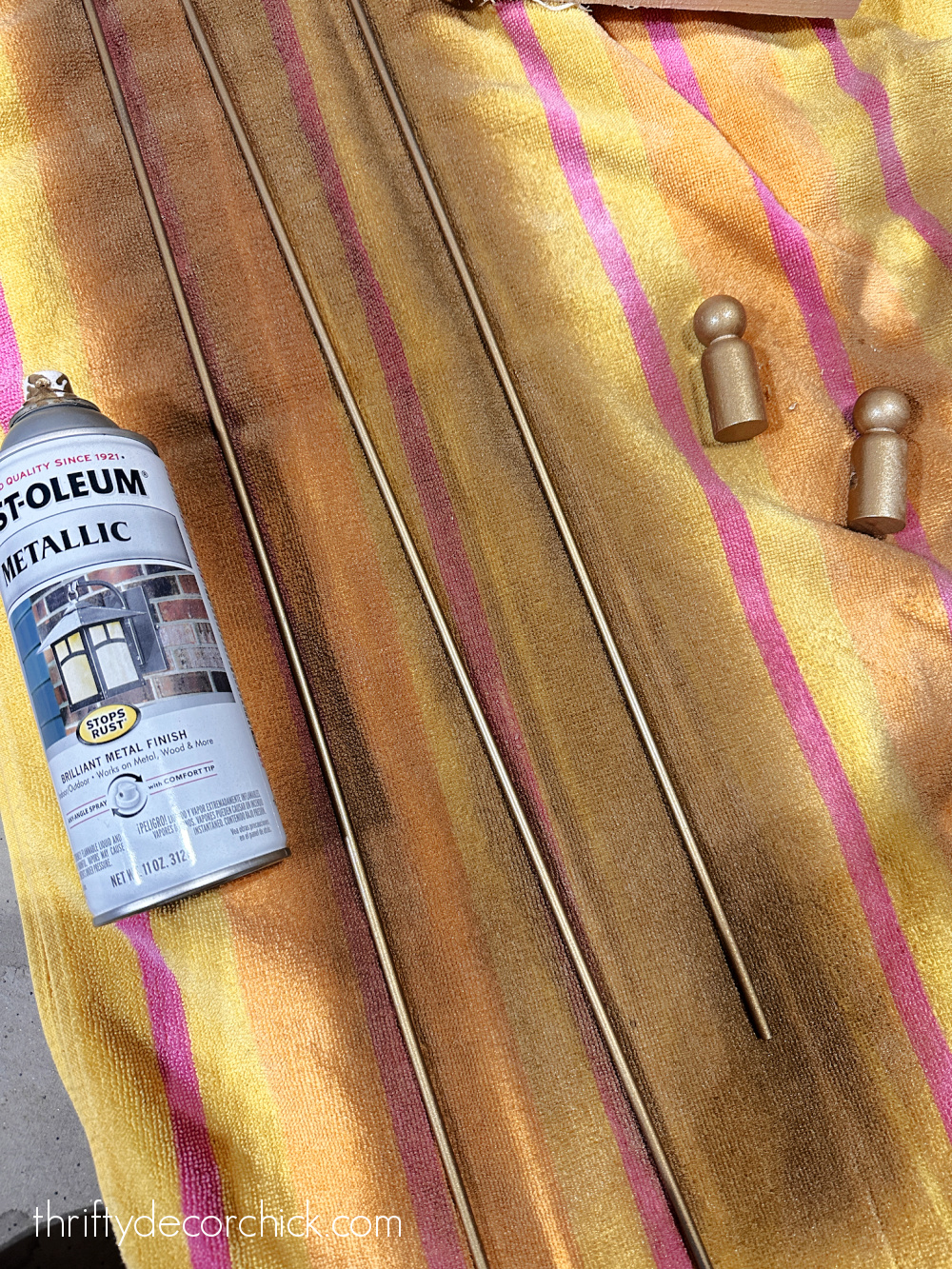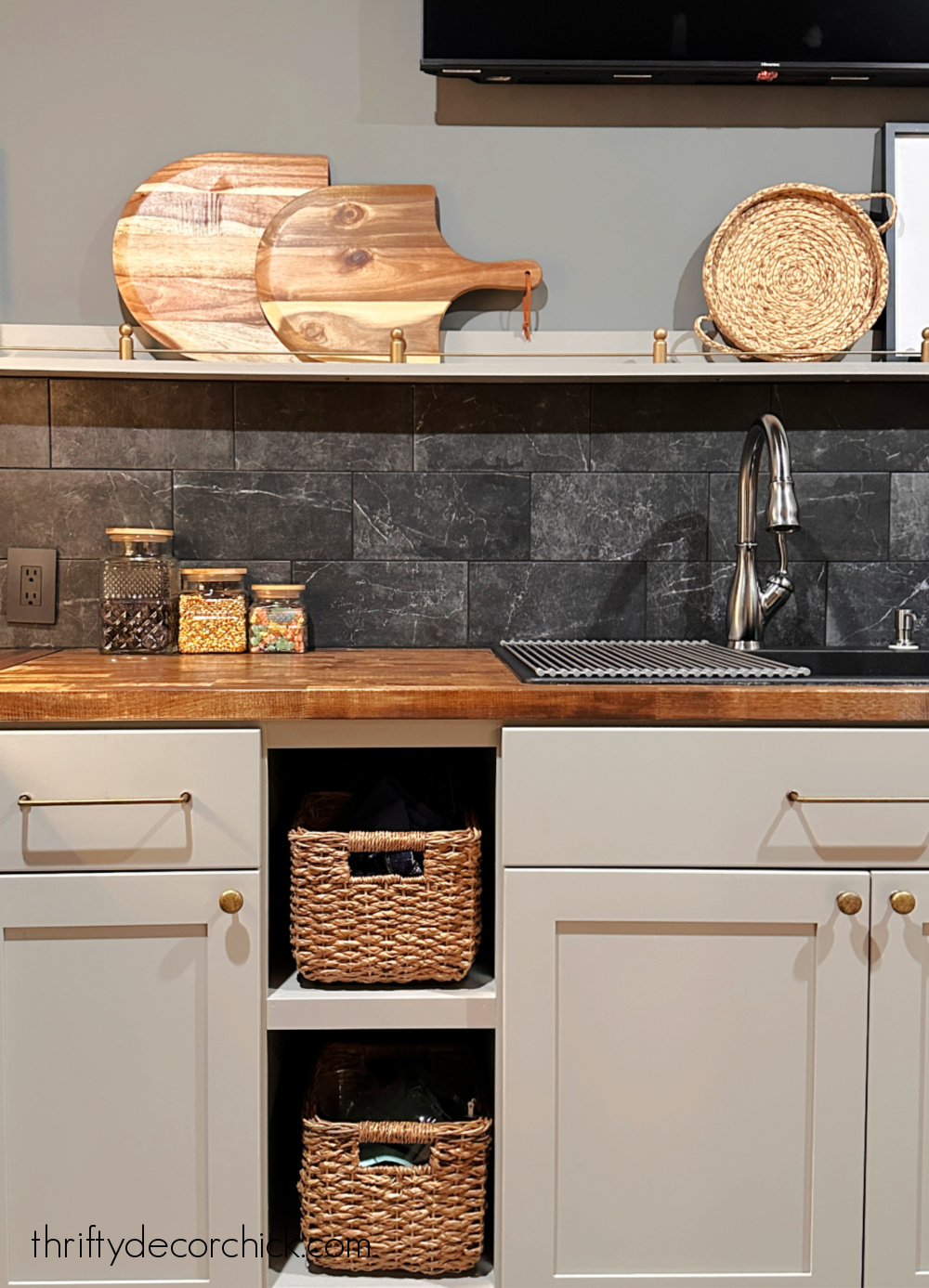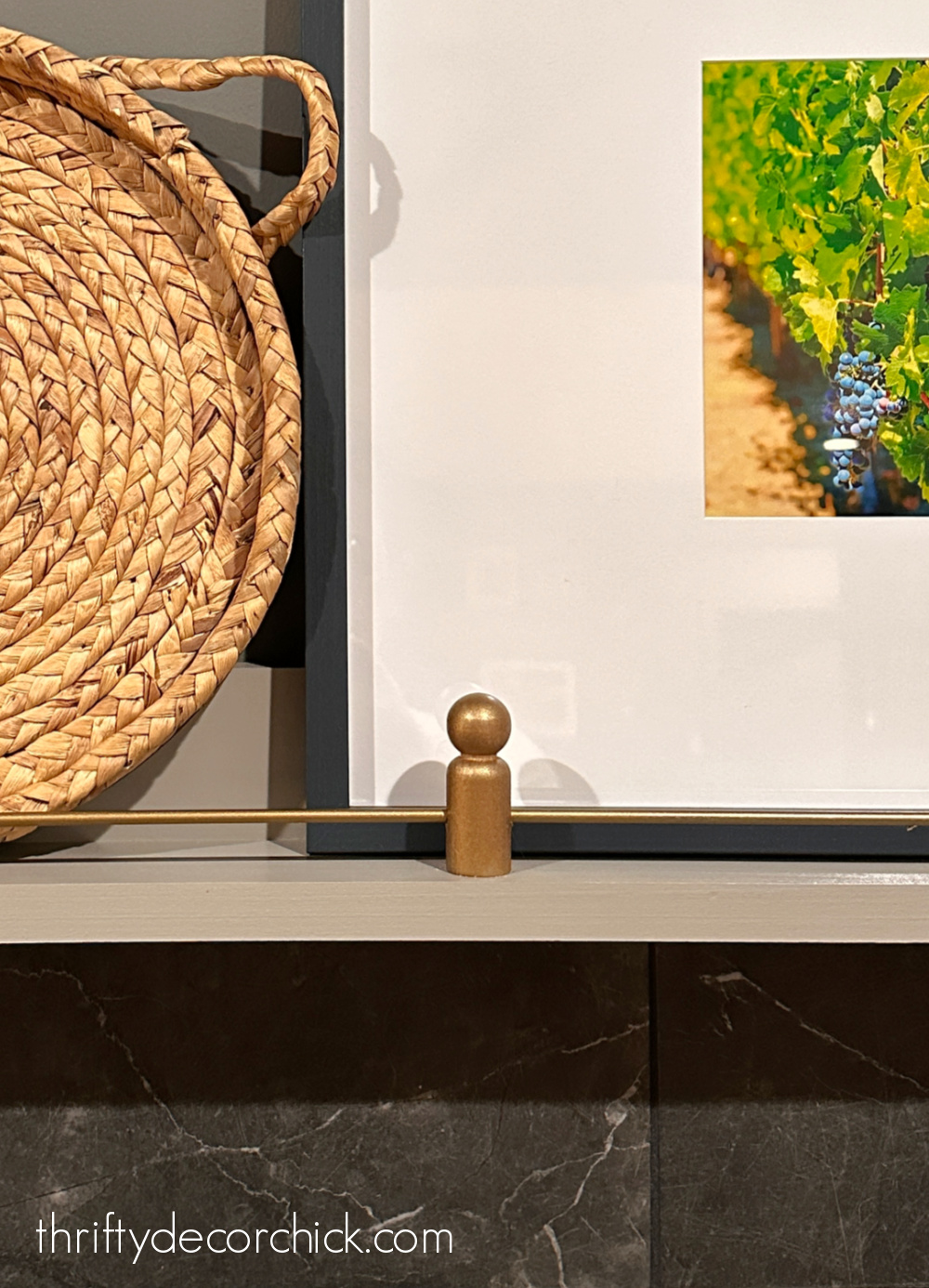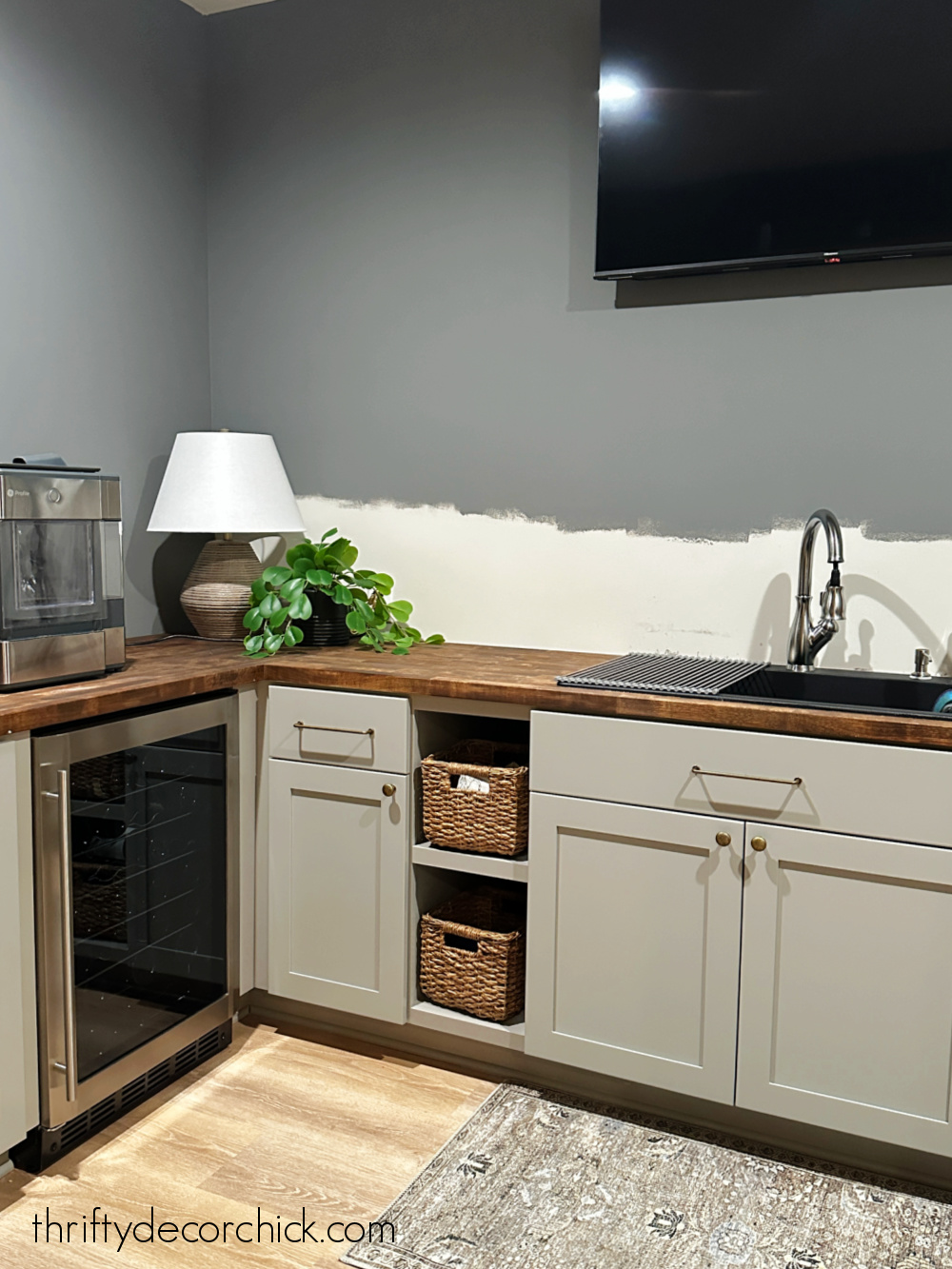
DIY “brass” gallery/tipping rail for a shelf (for means much less!).
I’ve cherished the look of those delicate brass gallery rails for years! They’re normally put in alongside the entrance of shallow cabinets as a reasonably ornamental accent, and so they forestall gadgets from sliding off the shelf.
I like something brass, particularly a gorgeous little element like these posts and rails. I knew I wished to include them into our basement kitchenette, however the true brass choices will not be low-cost!
I ended up creating my very own model that I believe appears to be like fairly nice, and features simply as nicely!
This publish could comprise affiliate hyperlinks to your comfort.
I could earn a small fee when you make a purchase order by hyperlinks.
Since these had been so cheap (I spent lower than $80 on the tile), I splurged on the sticky tile setting mats I like a lot for the set up:
They make the tile set up a lot simpler and faster, with a lot much less mess! They do price greater than mortar although, so that you pay for the comfort.
After the tile was up, grouted and caulked alongside the counter tops, I put in an extended however shallow shelf proper on high of the tile backsplash:
I used poplar wooden for this undertaking understanding my plan to drill into it. I normally use pine, however pine is softer and extra liable to splitting.
They solely take three items of wooden, however for my newest model I solely used two — the again piece (that I hooked up to the wall) and the underside piece.
I priced out the brass posts and rails for my lengthy shelf (it is almost 9 ft lengthy) and the whole was going to be $200! I am all for splurging, however I saved hesitating to get them organized…figuring I may make one thing comparable for means cheaper.
To make this DIY model work, I wanted to have the ability to drill a gap straight by the wooden pegs. I attempted it out simply holding one and drilling into it, however I could not get the outlet fairly straight sufficient.
So as a substitute, I made a little bit holder/jig for my little males. 🙂 I nailed a couple of scrap items of wooden tightly round one so it match comfortable in there:
I wrapped them with painter’s tape to keep away from the wooden splitting on the entry and exit of the drill bit.
The peak of the outlet must be constant on all the pegs, so the rail is degree throughout the completed shelf. I marked the identical spot on each and used a 1/4 inch drill bit to create the holes:
As soon as the little males had been all completed, I made positive the holes had been a constant top:
The one on the left was my take a look at piece, and I did not find yourself utilizing that one.
As a result of these are wooden, I did a lightweight sanding of the pegs earlier than the ultimate coat so the wooden grain could be much less pronounced. It positively helped to make them look extra like strong metallic.
After cleansing the metallic rods, I sprayed these as nicely:
I believe spraying these took longer than putting in the entire dang factor. Spray a little bit, dry, flip. Spray a little bit, dry, flip. 😂 I like to recommend simply holding them and spraying half at a time.
When every little thing was dry, I took every little thing all the way down to the basement to determine my spacing. I had seven pegs, and two of these had been positioned on the ends. So I had 5 to house out equally in between.
I used a small drill bit to make a gap within the backside of every peg:
Take some care to not break up the wooden as you go. The important thing to doing that’s going slooooow as you drill and beginning with smaller bits and dealing as much as bigger ones if wanted.
I used that very same small bit to place my preliminary holes into the ledge, after which adopted up with a barely bigger one:
For this undertaking, I’d err on making the outlet loads massive to your screw so it does not crack your wooden as you put in the pegs.
I put in the screws from beneath the ledge, into the underside of every peg.
Once more, be affected person and go gradual as you connect the poles. I did not have any points in any respect with the shelf or pegs splitting as a result of I took my time and drilled holes first.
I held up every metallic rod to see the place I wanted to trim them down, after which used the metallic blade on my oscillating device to chop them. It solely took a couple of seconds to get about midway by the rod, then I snapped the surplus off.
As soon as they’re all put in, the rails aren’t going anyplace! It’s extremely safe and can maintain up nicely to the frames and boards I’ve on this skinny shelf:
You possibly can additionally use wooden dowel rods for the rails, however they will not be fairly as sturdy, particularly when you have greater than a meals or so between the posts.
We LOVE it! We had buddies over this week and I obtained so many compliments on my cute DIY tipping rail. 🙂
It took a little bit work, however I saved greater than $180 doing this by myself. The three rods had been $12 and the wooden pegs had been $4:
Should you stand up realllll shut, you may inform the “brass” posts are wooden, however it could take some inspection. Except you are an professional on brass gallery rails, I do not assume anybody would assume a factor about them being wooden anyway. 😉
Just some extra tasks to complete up and share in right here, after which I will do the complete tour of this house:
It was SO definitely worth the time creating my very own model of this gallery rail undertaking! Now I am pondering of the place else I can add these round the home. I simply love the little ornamental element.
Trending Merchandise


